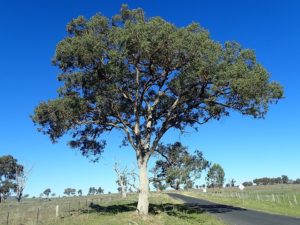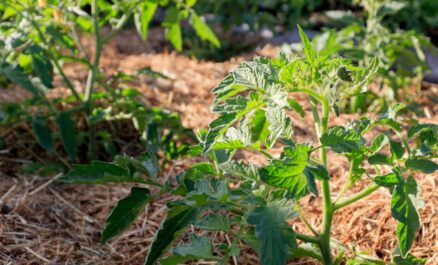Trees With Invasive Roots In Australia | Avoid These Trees!

Whilst some trees can be a real asset to your garden, others can become a challenge to manage. This is particularly the case with trees that have invasive roots, as some tree roots have been known to travel up to thirty metres away from their tree base!
Trees with smaller roots provide the ideal combination of aesthetics and straightforward maintenance, plus the peace of mind that structural damage will be minimised. Here is our guide to trees with invasive roots in Australia and ways to alleviate the damage if you discover one in your garden.
Why are invasive roots problematic?
Trees use their roots for stability and water uptake and vary from narrow to wide and shallow to deep. If tree roots are invasive, they can become a massive liability to property owners. Some of the issues they can cause are:
- Creating an uneven surface and posing a safety hazard that could cause trips or falls.
- Infiltrating drainage networks and pipes, including septic lines where they can plug toxic sewerage, making the air, water and surrounding soil a health hazard.
- Buckling and warping footpaths, paving and driveways.
- Shifting retaining walls.
- Lifting and destabilising a building’s foundations.
- Making it difficult for the ground around trees to be cultivated.
- Emigrating to neighbouring properties and causing potential damage.
- Being expensive to remove if the root network is extensive.
Warning signs of invasive tree roots
Invasive tree roots can cause damage to paving, retaining walls, driveways, drains and a building’s foundations. The most common signs of invasive root damage in paving and driveways include:
- Cracks across tiles or concrete
- Bumps or exposed roots around the area
- Buckling in tiling or concrete surfaces
The most common signs of invasive root damage in drains include:
- Clogged drains
- Slow-flowing drains
- Changes in water pressure
The most common signs of invasive root damage in foundations include:
- Cracks in the foundational flooring
- Vertical cracks on foundation walls
- Uneven window and door frames
- Buckling in floor surfaces
- Shattered or cracked windows
What trees can cause invasive damage?
Trees are a great addition to any garden and provide health, environmental, aesthetic and even economic benefits. However, some species are best avoided due to their potential to cause structural damage to a property and its surrounds. Here is a list of trees with invasive roots.
Camphor laurel (Cinnamomum camphora)
Image from The Plant Attraction
Camphor laurel is an evergreen tree that grows up to 20 metres in height. It has a large, spreading canopy and a short, stout trunk, and grows in areas of high rainfall and in a wide range of soil types.
This tree has prolific seed production and a lack of serious diseases or predators. It is highly invasive and tends to form single species communities and exclude most other desirable native vegetation. Hence, it is considered a significant environmental weed in south-eastern Queensland and New South Wales.
Because it is also self-propagating and has a rapid growth rate, its root system is renowned for damaging sewerage pipes. All parts of the plant are also poisonous and can cause allergic reactions and nausea and vomiting if ingested, so this is definitely one to avoid in your garden!
White poplar (Populus alba)
Image from Woody Invasives
Poplars are large deciduous trees that grow to around 20 metres tall. They have a white to grey smooth-barked trunk and are widely planted as ornamentals. However, they love deep moisture and can have extensive roots systems that will travel long distances to hunt out water.
They are notorious for blocking pipes, lifting paving and even damaging foundations. White poplars also sucker freely from their roots, so they can sprout prolifically and form dense thickets that can be challenging to eradicate. They are considered a threat to vegetation and disturbed wetlands in many areas of Australia.
Evergreen figs (Ficus)
By DO’Neil, CC BY-SA 3.0
Many ficus species are pruned into a ball-shaped head of foliage so they can be grown in ornamental pots. However, they become problematic if planted in gardens. Their root systems are very robust and aggressive and can damage paving, sewerage pipes, retaining walls and even property foundations.
However, even in pots, they are remarkable escape artists! Unless the pot is elevated, the roots can grow out of the drainage holes and find soil. Particular species to avoid include weeping figs, Moreton Bay figs and Port Jackson figs.
Evergreen alder (Alnus acuminata)
Image from The Tutu Guru
These trees are not suitable for small backyards as they grow to a massive size. Their roots can lift fences, break pipes and cause paving to buckle. Their canopies also spread across yards blocking the light, while the roots use up all available soil space. They are not permitted to be grown in backyards in New South Wales.
Pride of Bolivia (Tipuana tipu)
Image from Tatters
The Pride of Bolivia is a fast-growing deciduous tree that grows up to ten metres high. It is hardy and adaptable and is known for its bright yellow-orange flowers and reddish-brown bark. This is a stunning tree with a large extending canopy, however, it has a very aggressive root system that can lift driveways and damage foundations and retaining walls. It is considered a weed in many parts of Queensland.
Palms (Arecaceae)
Image from iNaturalist
While young, palms can create a tropical oasis in your yard or next to an outdoor pool. However, problems can emerge as they grow and age as their expanding root system can lift pavers and damage retaining walls. Some palm fronds can be quite large and create a mess on windy days. Some species also produce fruit that can attract bats (that can be incredibly noisy!) and clog pool filter systems.
Gums (Eucalyptus)
By Geoff Derrin – Own work, CC BY-SA 4.0
Gum trees vary in shape, height and colour, but all have similar characteristics that can make them problematic for planting near a home. This includes their aggressive root system that can be far-reaching and cause foundational damage to homes. Their large canopies and branches that can die but not fall straight away can also pose potential risks to property during strong winds or storms.
Liquidambar (Liquidambar styraciflua)
By Famartin – Own work, CC BY-SA 4.0
These are large, fast-growing trees that can reach 25 metres high and spread to around 12 metres wide. They are a conical shaped tree which becomes rounded with age. They have fine-toothed leaves which colour to orange, red and purple during Autumn. However, although beautiful, they have strong, aggressive root systems that can completely clog stormwater pipes, so are best suited for parks and larger gardens.
Silver Maple (Acer saccharinum)
Image from NPS
This is an attractive, fast-growing shade tree that grows up to 12 metres tall. Its leaves have a distinctive, silvery underside and in autumn range in colour from greenish-brown to greenish-yellow.
However, although prized for their vibrancy, their shallow, fast-growing roots are one of the most invasive. As their roots grow, they have been known to crack pavements, driveways, pipes and property foundations. They are best suited to large parks, gardens and private properties.
Southern Magnolia (Magnolia grandiflora)
By Jim Evans, CC BY-SA 4.0
The Southern magnolia is a beautiful dense tree that usually forms a dome shape, and it has glossy green leaves with a velvety brown underside. Their elegant cup-shaped flowers are white and bold and appear from spring to summer.
But this tree can grow impressively large, and many of them are far too big for the average garden. Their knotty root systems can viciously spread and cause structural damage. Because of crowded under-soil space, they also leave no room for other plants to thrive.
Willow (Salix)
Image from The Spruce
Willows are deciduous trees that have long, narrow leaves and flower stalks with numerous tiny flowers. However, their large, dense and aggressive roots have been known to spread up to forty metres wide, causing havoc to drains, roads and pavements. The most seriously invasive willow, the Grey Sallow (Salix cinerea), has invaded wetlands and riverbanks, blocking waterways and causing erosion. Willows are a serious weed in Victoria, New South Wales and the ACT and are considered Weeds of National Significance (WONS).
How to control invasive roots
Choosing trees with the least invasive roots is always the best option if you are concerned about structural damage to your property or its surroundings.
You can diagnose an invasive root issue by digging around the area that is close to the suspected trees and checking if the roots are extending and starting to grow downwards. If they are severely compromising your property, they will need to be removed professionally.
If you have a tree that is known for having an aggressive root system, root barrier systems are an ideal preventative measure. These are typically manufactured from a flexible high-density polythene membrane that restricts the unwanted movement of root growth. They work by training a tree’s roots to grow in a specific direction away from plumbing, driveways, paths and foundations.
However, their installation should only be done by a trained arborist, as the placement of any root barrier shouldn’t unduly restrict the volume of soil the tree can access. This can destabilise a tree’s root system and increase its potential to lift from the soil. These experts will ensure trees have the resources they need to thrive while minimising their potential to cause damage.
Also, if a tree starts to infiltrate plumbing, it doesn’t mean it necessarily needs to be removed entirely. Tree trimming experts can attend to the immediate threat, and a plumber can often replace the damaged area with the appropriate repairs and sealing to control further damage.
References
- 2021,Invasive root growth – problems and solutions, All Stake Supply
- Rob Schneider, 2020, 7 trees to avoid planting in your backyard, hipages
- 2021, Garden maintenance, NSW Government
- 2014, The four worst trees to plant in your garden, Seed Landscape Design
- 2020, Trees & Other Plants to Avoid, Burkes Backyard
- Lisa Walden, 2020, 7 trees and plants with the most invasive roots, Yahoo News
- 2017, Root barriers – where to put them? Trees Impact Group
- 2021, Camphor laurel (Cinnamomum camphora), NSW Government Department of Primary Industries

















